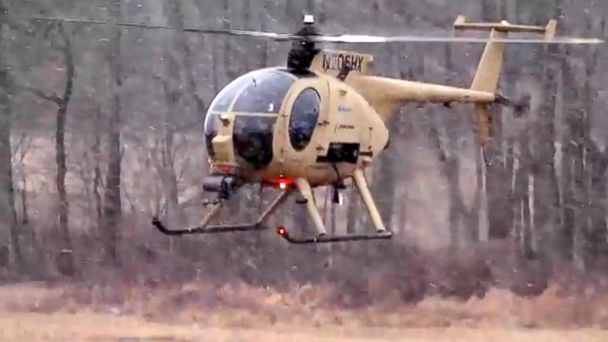Navy's Future on Video: Fly Choppers With Tablets, Blast Enemies With Rail Guns

(U.S. Navy/YouTube)
Think of it as reality catching up with science fiction as Navy researchers have unveiled three technological advancements that could not only change the battlefield of tomorrow but also have impacts in the civilian world.
First off, Navy researchers have combined the smart pad technology so prevalent in today's society with navigational software that can be used to fly and land an unmanned helicopter.
Shown in a newly released demonstration video, working with the Marine Corps, the Office of Naval Research has adapted software that can be used to remotely pilot a helicopter with a smart pad - leaving the pilot's seat eerily empty as the craft slices through the sky and hovers over a landing area of its own choosing.
In field testing conducted earlier this year at the Marine base at Quantico, Virginia, Marines were able to program a flight path for an unmanned helicopter from Point A to Point B.
When the helicopter arrived at its destination, another Marine equipped with a smart pad guided the unmanned helicopter to an unobstructed landing area with a click of the screen.
Because of the familiarity of smart-pad technology it took only a half hour for the Marine guiding the helicopter to grasp how to land the helicopter safely. Known as the Autonomous Aerial Cargo/Utility System (AACUS) the software has so far been tested on two small helicopters, the K-MAX and the Early Bird though future testing is planned for larger helicopters including the large CH-53 Sea Stallion. K-MAX helicopters have already been used for unmanned flights in Afghanistan but require a trained pilot and significant technical training. The new software makes that a thing of the past.
Navy and Marine officials say the technology isn't ready for a combat battlefield, but could prove useful in reducing the number of trained personnel needed for simple cargo deliveries to combat units.
Since 2005 the Navy has been working on what it calls "rail gun" technology that uses electromagnetic energy to fire a piece of metal as a projectile at distances greater than conventional guns. The Navy says it will conduct field testing of the technology in 2016.
The goal is to be able to fire a projectile to a range of 110 nautical miles against a wide range of threats. The field testing will allow the Navy to determine how it can be put to use. The rail gun will be mounted on a Joint High Speed Vehicle as the test platform.
But coming this summer the Navy is going to test its laser technology in the Persian Gulf. The Navy made waves last year when it showed video of a high-energy laser that was able to knock drones out of the sky.
Formally known as the Laser Weapon System, the laser will be tested aboard the USS Ponce which is permanently stationed in the Persian Gulf. The laser's intensity will be able to be scaled back so the ominous sounding weapon could also be used in a non-lethal mode to warn potential adversaries at sea and in the air.
In a less showy but potentially more world-changing study, scientists at the US Navy Naval Research Laboratory were able to convert seawater into a fuel that was able to power a radio-controlled model plane in flight.
How did they do that? Navy researchers broke seawater into carbon dioxide (CO2) and hydrogen (H2) gas components. Those gases were then converted into a liquid hydrocarbon fuel that was able to power the model plane's engine.
Given how much of the earth is covered in seawater, the conversion of seawater to fuel holds great promise though it is likely a long way from a practical application.